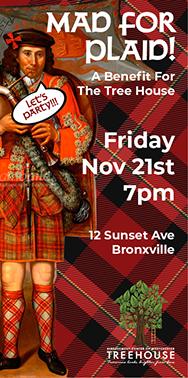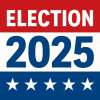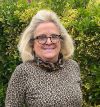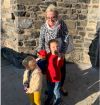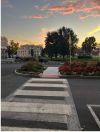From the Mayor: Review of Important Issues from Last Legislative Session
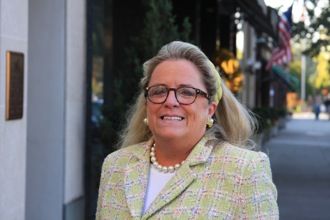
By Mary Marvin, Mayor, Village of Bronxville
Nov. 9, 2022: This week, Village Administrator Palmer and I have been invited to participate in the meeting of the New York State Conference of Mayors to establish our legislative priorities for 2023. The direct involvement of city and village leaders in developing and advocating for our legislative agenda is more important than ever as the 2023 legislative session is shaping up to be critically important.
Given the uncertainty surrounding the state’s financial position, the challenges of rising inflation and the end of extraordinary federal aid, the coalition of cities and villages will have to lobby harder than ever to ensure proper funding of municipal programs.
As we enter a new session, I thought it important to recap the successes and non-starters that we advocated for in the last legislative session.
To start on a positive note, thanks to our Assemblywoman Amy Paulin, cities and villages now have the option to set their speed limits at 25mph. Until this past legislature session, state law required municipalities to impose speed limits of not less than 30mph unless it was a school zone. Most communities thought that on many of their roads a minimum of 30mph was just too high. The issue is currently under discussion at the Board of Trustees’ level as we have to change the Bronxville law should we want to put this option into action. We opened the public hearing at our October board meeting for the required 30 days which will close at the November 14 Board of Trustees meeting. At this juncture, we are soliciting opinions from all our residents and ask for your input on this issue. Please feel free to call, send emails or letters sharing your thoughts.
Also prior to this legislative session, the authority to conduct remote meetings via zoom had a sunset of January 14, 2022. With remote meetings becoming extremely common, public bodies and the members of the public finding them useful and convenient, often resulting in far greater community participation, the mayors' group lobbied and the open meetings law was amended to allow communities to hold remote meetings when they feel necessary and have them meet all state standards under the “Open Meetings Law.”
Sadly, we advocated for many legislative changes that never made it to the Governor’s desk. Our perennial request for the entire time I have been mayor has been to reform New York's one-of-a-kind Scaffold Law. Enacted in 1885, it holds contractors, employers and property owners absolutely liable for injuries even if the worker was grossly negligent. As a result of this one of a kind standard, general liability insurance premiums in New York have skyrocketed with premiums 300% to 1200% higher than any other state in the country. As a consequence, any construction projects that we undertake are faced with significantly higher costs. The Mayors Conference long advocated for a comparative negligence standard to weigh and balance if an employee has committed a criminal act, used drugs or alcohol, failed to use safety devices or failed to comply with employer instructions for safe work practices. We will continue to advocate for such a change in the 2023 session.
We also received no traction on reducing the interest rates on judgments against municipalities from a blanket 9% to a market rate requirement. To pay interest on judgments by a municipality is clearly fair and equitable, but the current rate of 9% is much higher than the interest rate that a judgment creditor would earn by investing the money. This is particularly important as New York's local governments are frequently the target of litigation. As example, in an average year, New York municipalities pay over $1 billion in claims and judgments and the ultimate cost is always borne by the taxpayers. This artificially high rate of interest on judgments also creates a disincentive to appeal since municipal defendants risk having to pay substantial interest costs if the appeal is unsuccessful. In addition, the current interest rate on judgment acts as an incentive for plaintiffs to unnecessarily delay proceedings, which has become the norm.
We also had no success in our effort to expand the use of red light and speed cameras to any community whose so desires throughout the state. Currently they have been authorized on a very limited basis to specific municipalities including Yonkers. This technology has proven to be a cost-effective way for any local government to help reduce running red lights and speeding especially in pedestrian friendly neighborhoods and school zones. We were hoping the program would become statewide.
We also petitioned to have State Law amended to clarify local authority and procedures for authorizing outdoor dining on municipal sidewalks and streets including the relationship to the State Liquor Authority.
As we move forward, I will share the local government priorities for the 2023 legislative session.
Government & History Directory
Bronxville is a quaint village (one square mile) located just 16 miles north of midtown Manhattan (roughly 30 minutes on the train) and has a population of approximately 6,500. It is known as a premier community with an excellent public school (K-12) and easy access to Manhattan. Bronxville offers many amenities including an attractive business district, a hospital (Lawrence Hospital), public paddle and tennis courts, fine dining at local restaurants, two private country clubs and a community library.
While the earliest settlers of Bronxville date back to the first half of the 18th century, the history of the modern suburb of Bronxville began in 1890 when William Van Duzer Lawrence purchased a farm and commissioned the architect, William A. Bates, to design a planned community of houses for well-known artists and professionals that became a thriving art colony. This community, now called Lawrence Park, is listed on the National register of Historic Places and many of the homes still have artists’ studios. A neighborhood association within Lawrence Park called “The Hilltop Association” keeps this heritage alive with art shows and other events for neighbors.
Bronxville offers many charming neighborhoods as well as a variety of living options for residents including single family homes, town houses, cooperatives and condominiums. One of the chief benefits of living in “the village” is that your children can attend the Bronxville School.
The Bronxville postal zone (10708, known as “Bronxville PO”) includes the village of Bronxville as well as the Chester Heights section of Eastchester, parts of Tuckahoe and the Lawrence Park West, Cedar Knolls, Armour Villa and Longvale sections of Yonkers. Many of these areas have their own distinct character. For instance, the Armour Villa section has many historic homes and even has its own newsletter called “The Villa Voice” which reports on neighborhood news.
Link to Village of Bronxville One Square Mile Monthly Newsletter
Village of Bronxville Administrative Offices
337-6500
Open 9:00am - 4pm excluding holidays and weekends
Bronxville Police Department
337-0500
Open 24 hours
Bronxville Parking Violations
337-2024
Open 9:00am - 4pm excluding holidays and weekends
Bronxville Fire Deparment
793-6400







